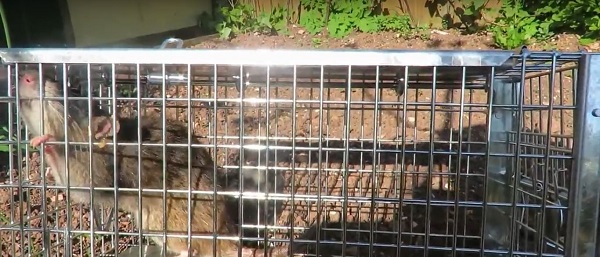If you hear noises in your walls or attic, particularly at night, there is a good chance that you are hearing the
sounds of a mouse gnawing away. Mice must continually chew things to keep tooth growth in check. The incisor teeth
of mice, as with most rodents, grow constantly throughout their lives and must be kept trimmed. Mice who invade your
house are presented with a smorgasbord of things to gnaw.

Mice will chew to gain access into a house, a room, or a container. They will chew around a pipe, or the edge of a window, or
through an eave to get inside a building. They will even chew through the weather stripping at the bottom of a garage door to
gain access.
Once inside, mice will chew to widen holes drilled in studs for electrical wires so that they can access additional areas in the house.
They will shred the electrical wiring insulation to help widen these holes. As a result, exposed wiring can short, causing sparks that
can start a blaze. Mice are responsible for causing many house fires every year.
Mice can chew right through drywall to gain access to the interior of your house. Fiberboard backing on the backs of cabinets doesn’t stand a
chance of keeping a determined mouse away from food stored within. In fact, mice can chew through almost any building material, including wood
and aluminum.
Another reason that mice chew is to create nesting materials. Wiring insulation, paper backing for wall insulation, books, clothing, artwork, and
softer furniture materials are all chewed into forms suitable to be used in a nest. Pregnant mice make finding suitable nesting materials a priority.
Although mice prefer seeds and grain, they will chew on most foods, including meat, candy, and nuts. Along the way, their feces and urine will damage
any food to which they gain access. Mice have no problem chewing through a cabinet or a box to reach various foods. Inside a cabinet, mice can easily
chew through plastic or cardboard containers to reach the food inside. Metal containers or glass jars can be used to protect food products.
Outdoors, mice can destroy trees by chewing away bark—the outer skin protecting the plants. Another outdoor target can be car wiring. Mice may climb into a
car’s engine compartment to find a safe place to nest, and commence stripping car wires to create nesting materials.
One thing that mice do not normally chew is steel wool. The fine wires and sharp edges of steel wool can damage a mouse’s face. For that reason, gaps around
pipes that pierce exterior walls can be stuffed with steel wool and then caulked as a deterrent to mice entering your house.
The bottom line is that impervious materials, such as concrete, metal, and steel wool should be used to plug holes that mice can use to access your home.
Otherwise you may simply be providing more materials for mice to chew.
Go back to the
How to get rid of mice in the attic home page. You might also want to read about
how to kill mice and why the use
of snap traps is better than
mouse poison. Read an analysis of the different types of traps and how to use them on the
how to trap mice page.
Learn why
bait is not as important as trap type, placement and location. Also read a full analysis of
mouse repellent to understand why it
never works. If you see droppings and want to identify them, read the
mouse poop page. If you need to hire professional help, read about
how much does mouse removal cost?
or you can read this site to learn how to do it yourself. Feel free to email me about Can Mice Chew Through Anything?